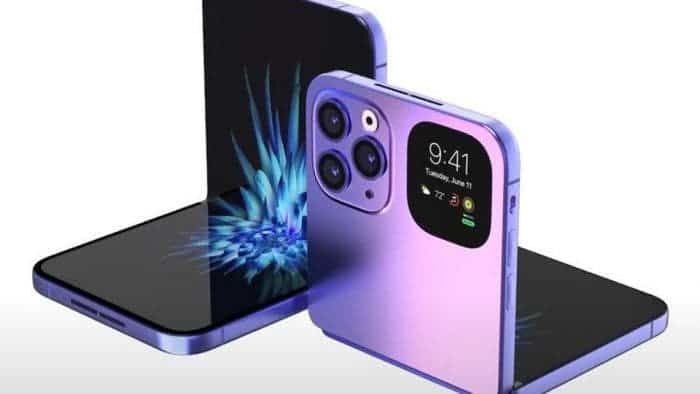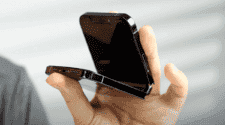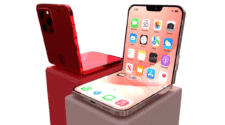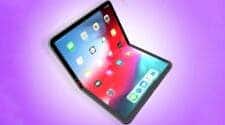Leading manufacturers like Samsung and Huawei already have two or three generations of foldable smartphones. Presently, the news of a foldable iPhone is gaining more momentum. Since the beginning of this year, there have been multiple reports about the foldable iPhone. In January, Bloomberg said that Apple has begun to develop foldable phones and make prototypes. Apple is considering producing a foldable phone with “almost invisible hinges”. The phone will be similar in size to the iPhone 12 Pro Max. However, it may still take several years before it finally arrives on the market.

According to Jon Prosser, Digitimes and Taiwan’s “Economic Daily”, Apple’s first foldable phone will be similar to Samsung’s Galaxy Z Flip (iPhone Flip). The reports claim that this device is currently in testing by Foxconn, Taiwan.
As early as 2016, the United States Patent and Trademark Office announced a foldable iPhone with a flexible OLED display, similar in appearance to Motorola’s flip phones in the 90s. In Q2 of 2018, the patent submitted by Apple showed that when the foldable iPhone is closed, it will leave a display bar similar to a touch bar to facilitate users to read information. In February, March, and October 2020, Apple won patents on hinge creases, display life, and joint collaboration between folding dual screens, and reduction of screen scratches and dents…

Apple’s folding screen patents are iteratively fast. However, there is no inevitable connection between the layout of patents and the introduction of products to the market. This adds a sense of mystery to the timetable of Apple’s foldable iPhone.
In addition to Apple’s foldable phone, there are also several reports about Apple’s full-screen iPhone. There is consistent speculation regarding the arrival time of these phones. Will Apple’s full-screen iPhone arrive before the foldable iPhone?
Since the first-generation iPhone, many manufacturers have had to copy Apple’s design. However, in the era of full-screen and foldable phones, Apple is way behind. Why?
Full-screen smartphones: What’s happening in the Android camp
The Android camp has been ahead in a couple of features for the past three years. Since 2018, we have had full-screen Android phones. As of 2019, we had a preponderance of full-screen Android smartphones.
In June 2018, OPPO and Vivo took the lead in launching full-screen mobile phones without any gaps. OPPO Find X uses a periscope camera, while Vivo NEX uses a pop-up front camera. Both are electromechanical solutions. Shortly after, other phones like Honor Magic 2, Xiaomi Mi MIX 3, and Lenovo Z5 Pro used a manual sliding cover. In 2019, the likes of the Samsung Galaxy A80 arrived with a flip camera. However, these devices are mostly flagship smartphones.
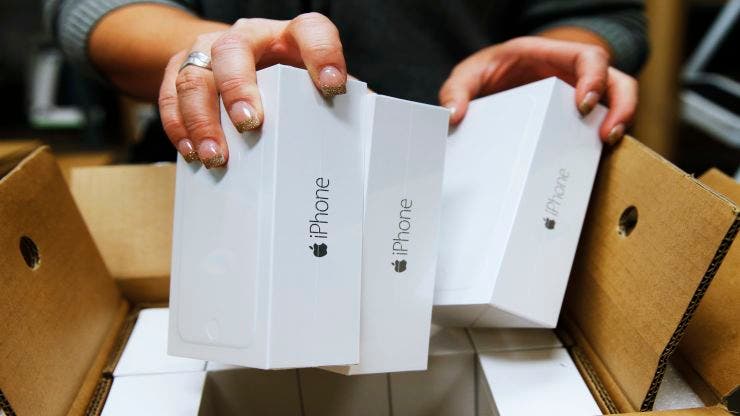
Gizchina News of the week
However, to bring the full-screen feature to mid-range smartphones, Android phone makers took a step forward. Many smartphones use a water-drop and punch-hole display to achieve full-screen for mid-range devices. To mention a few devices, we have the likes of OPPO R17, Vivo X23, Xiaomi Mi 9 SE, Samsung Galaxy A8s, Huawei nova 4, etc
However, the exploration of the full-screen display in the Android camp goes beyond this. In 2019, OPPO and Xiaomi demonstrated their under-screen camera engineering smartphones. At the beginning of 2020, Vivo also followed up and showed off the APEX 2020, a concept phone with an under-screen camera. However, the solutions of Oppo, Xiaomi, and Vivo are just concept smartphones. They are not in the market. Nevertheless, ZTE has the real deal and the ZTE AXON 20 with an under-screen camera is already in the market. In fact, the second-generation ZTE Axon 30 with an under-screen camera will launch soon. These are Android full-screen devices
Full-Screen smartphones: What’s happening in Apple Camp
In contrast, Apple’s mobile phone screen for the past few years has always been consistent – no upgrade. Since the iPhone X, the iPhone has been using the notch design. Apple is more or less “homogenous” in its screen design and netizens are now questioning its innovative capabilities. Can we really compare Android and Apple?
The Android camp has a plethora of manufacturers working on smartphone display technology. However, Apple is just a single company that does not like copying any trend, at least not swiftly.
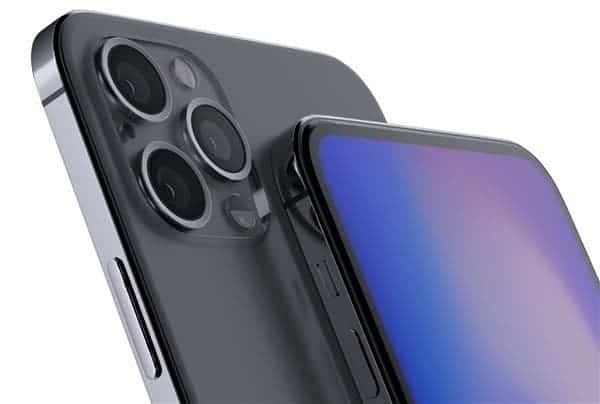
Android manufacturers can release a lot of models a year, some of them are just as exploration products of new technologies. Apple is different. The company releases a few models every year which limits its chances. From the business perspective, Apple is unlikely to take the risk and bear the risk of failure.
After all, Apple is not a technology company known for taking risks. As of now, the full-screen mobile phone solutions are not perfect. For example, electromechanical pop-up cameras are susceptible to falls, water, dust, and dirt. The pop-up camera solution is very complex and difficult to repair. The under-screen cameras still have the issue of light transmittance. Its output is not as good as an average front camera output.
At the same time, Apple also needs to balance new technology and product design aesthetics. After Apple canceled the fingerprint Touch ID, it is firmly optimistic about Face ID. However, the Face ID system is complex. The notch contains a flood light sensor, infrared cameras, dot matrix projectors, and many other components. Without these sensors, the Face ID feature will not work
After Cook took office, Apple focused on micro-innovation and devoted more energy to its ecological business. Apple’s Internet business revenue has gradually increased. The company no longer focuses on hardware innovation. This is another reason for the stall in its hardware development.
Full screens are difficult while foldable displays are super difficult to perfect
Apple likes a technology to be perfect or near-perfect before using it. This is exactly why the company may not be launching a full-screen or foldable display anytime soon.
In 2019, Samsung and Huawei launched the world’s first foldable smartphones from popular manufacturers. The very first foldable phone globally is from little known Royole. The company released the Royole Flexpai in January 2018, over a year before Huawei and Samsung’s foldable phones arrived.
Samsung and Huawei adopt two different folding schemes – one folds inward fold while the other folds outward. Of course, there were a lot of issues with these phones, especially the Galaxy Fold. The South Korean manufacturer had to postpone the global release to tackle these issues.
Even as of today, foldable phones still have some areas that need significant upgrades. Apple will certainly not follow a trend that is not “perfect”. The stakes for Apple are too high. It will be hard for Apple to abandon its current design. It is more complicated than just using a new design. If its current design goes, it means it will have to eliminate the AI and 3D structured light technology. Furthermore, for Apple to release a foldable phone means it has to break its device release routine that has been pretty consistent for many years.
Conclusion
It is not entirely easy for Apple to adopt a new trend. In the Android camp, many manufacturers try their hands and if it fails, many OEMs share in the failure. However, if Apple’s technology fails, the company bears the brunt alone. For a full-screen device, Apple will have to make provision for all the sensors in the notch or abandon the sensors. This is a decision that is not easy to take. For foldable iPhones, the display performance is the major challenge. The company needs to ensure “perfection” before it takes the bold step

